Why you can trust Tom's Hardware
Comparison Products
Today we put the Team Group MP33 up against a bunch of value-oriented competitors. We’ve included the Mushkin Helix-L that has an identical design, with the only difference being that the Helix-L uses Micron’s last-gen 64L TLC flash. We also threw in the Kingston A2000, Crucial P1, and Intel 660p, all rocking SMI 2263EN controllers complemented with a DRAM buffer. Additionally, we added in the Adata XPG SX8200 Pro and XPG SX6000 Pro, as well as the WD Blue SN550. Finally, we tossed in a Crucial MX500 and WD Black HDD for good measure.
Game Scene Loading - Final Fantasy XIV
The Final Fantasy XIV StormBlood and Stormbringer are two free real-world game benchmarks that easily and accurately compare game load times without the inaccuracy of using a stopwatch.
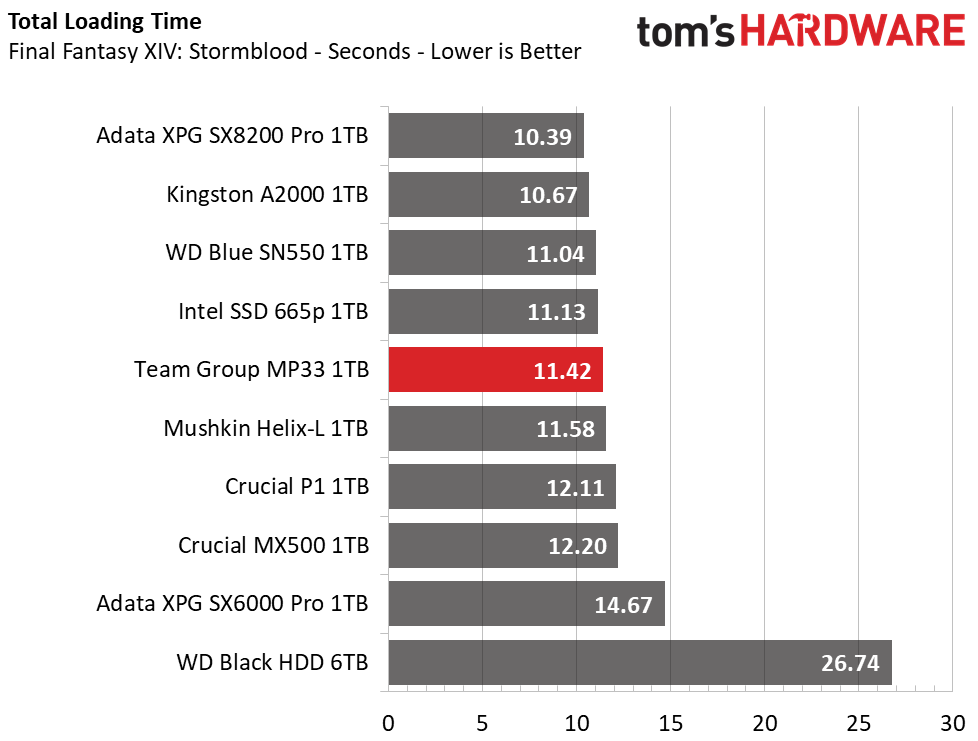
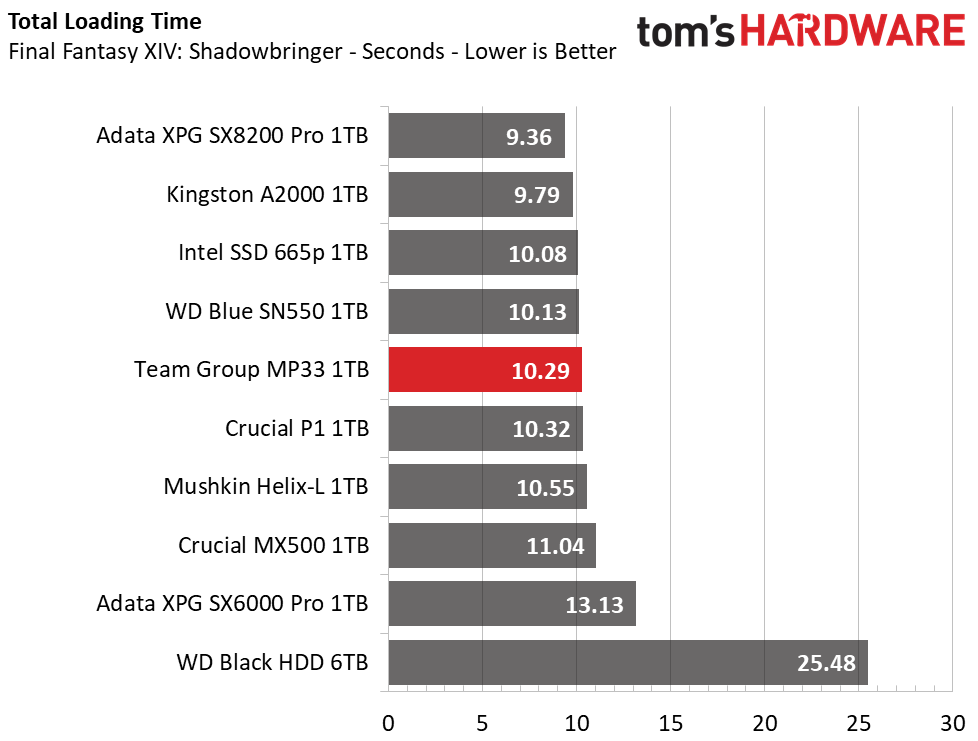
The MP33's game scene loading performance is on par with most SSDs. In total, the MP33 performs similarly to the Helix-L and Intel 660p. It's only a second faster than the SATA Crucial MX500, but offers significant gains over the HDD.
Transfer Rates – DiskBench
We use the DiskBench storage benchmarking tool to test file transfer performance with our own custom blocks of data. Our 50GB data set includes 31,227 files of various types, like pictures, PDFs, and videos. Our 100GB includes 22,579 files with 50GB of them being large movies. We copy the data sets to new folders and then follow-up with a reading test of a newly written 6.5GB zip file, 8GB test file, and a 15GB movie file.
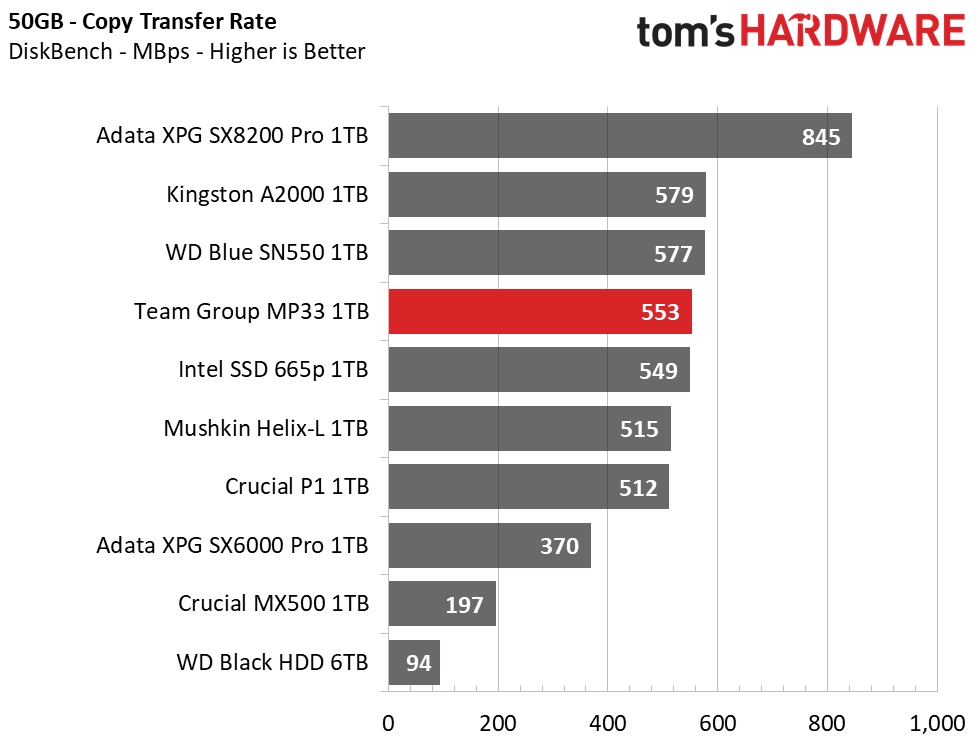
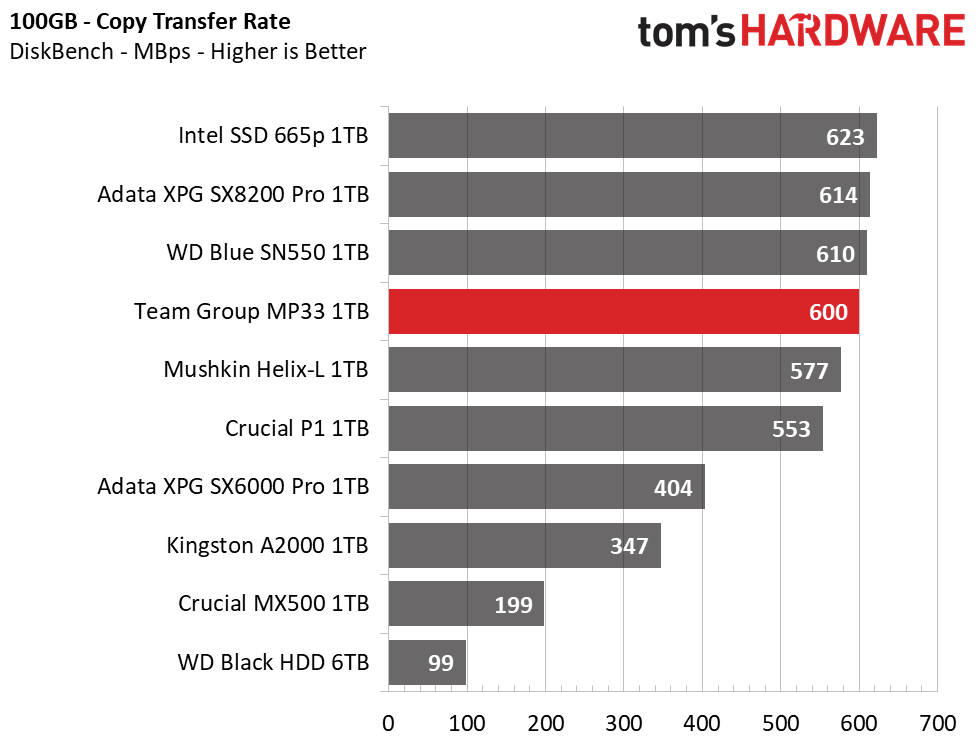
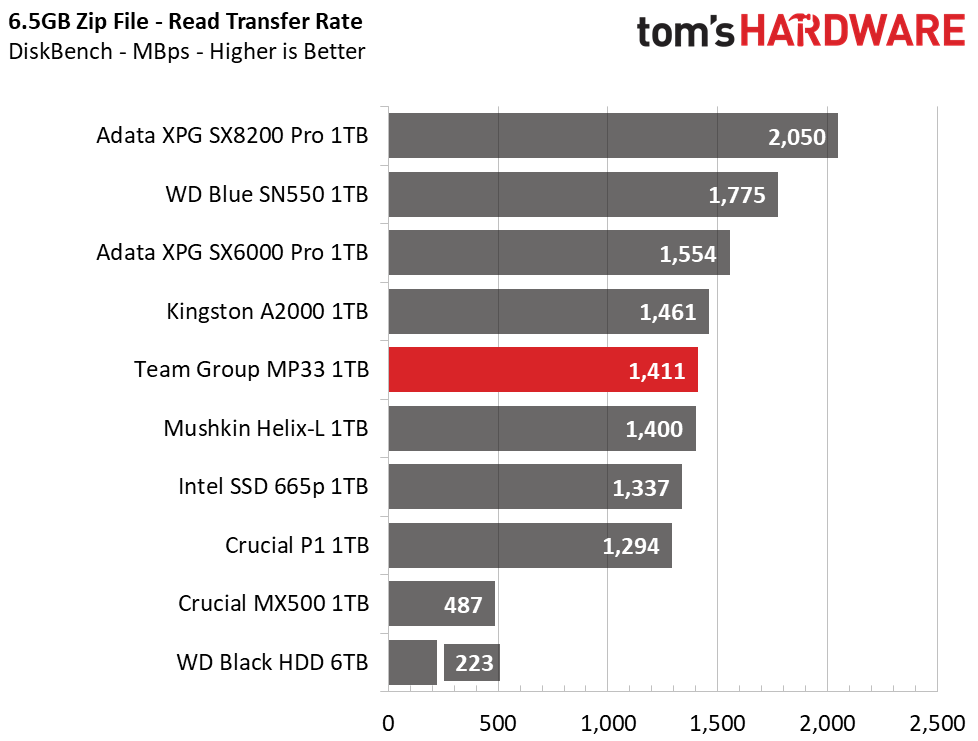


When copying 50GB of files, the MP33 delivered faster performance than most of the value-oriented competitors, although the Intel 665p is right on its heels. When we copy the 100GB dataset, the MP33 does well again, but the WD Blue SN550 and Intel 665p offer a bit more performance in this larger file copy test.
Team Group’s MP33 is also pretty fast at reading files, although performance fell behind most NVMe SSDs with TLC NAND and it wasn’t even in the same league as the more-powerful Adata XPG SX8200 Pro. It came in fifth place when reading most of the large files and leads over the QLC NAND flash-based alternatives, outperforming them in all read tests.
Trace Testing – PCMark 10 Storage Tests
PCMark 10 is a trace-based benchmark that uses a wide-ranging set of real-world traces from popular applications and common tasks to measure the performance of storage devices. The quick benchmark is more relatable to those who use their PCs lightly, while the full benchmark relates more to power users. If you are using the device as a secondary drive, the data test will be of most relevance.
Get Tom's Hardware's best news and in-depth reviews, straight to your inbox.
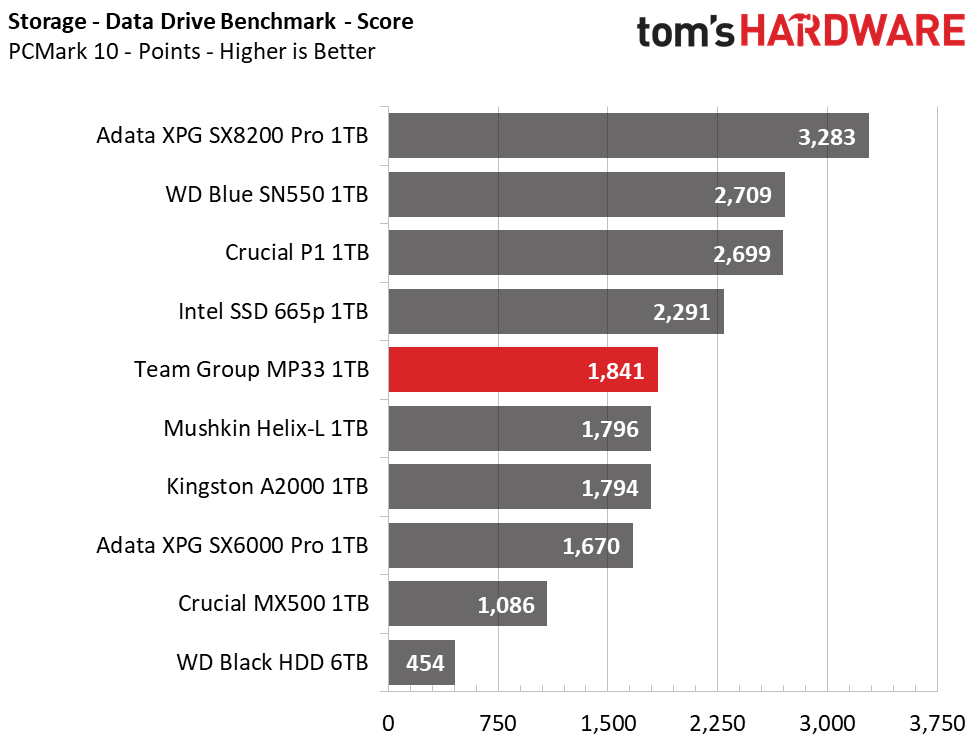
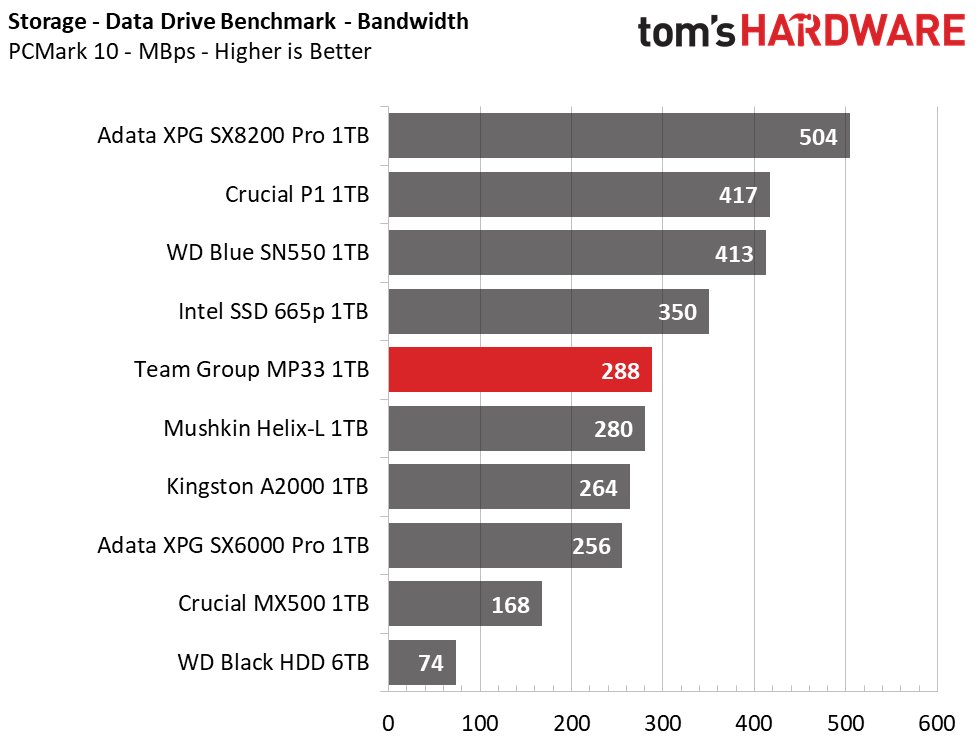

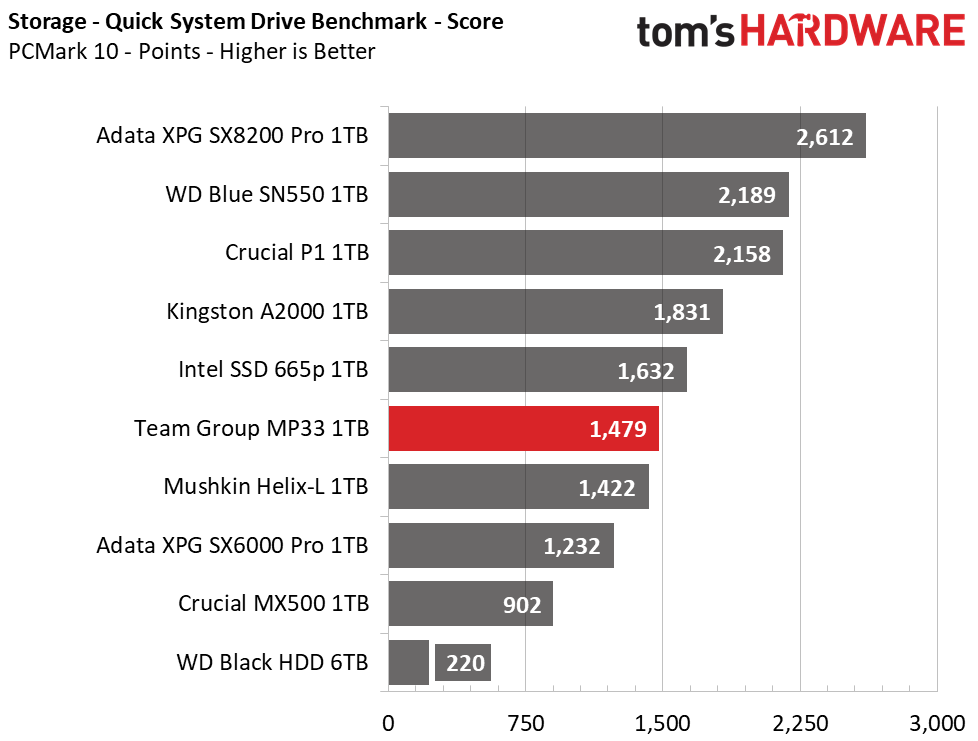
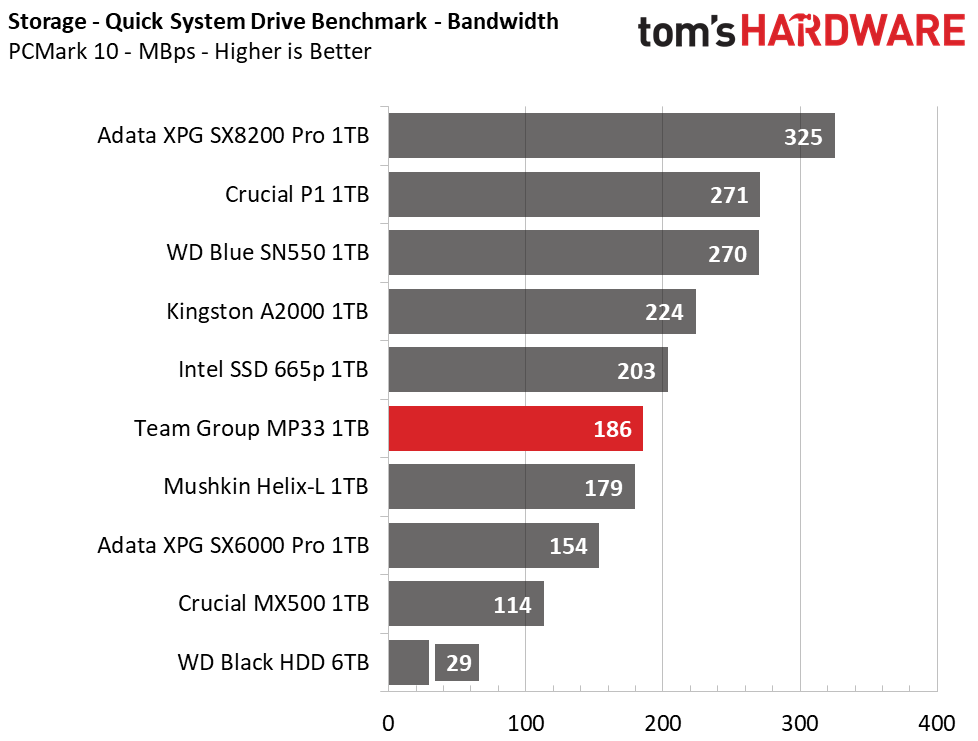

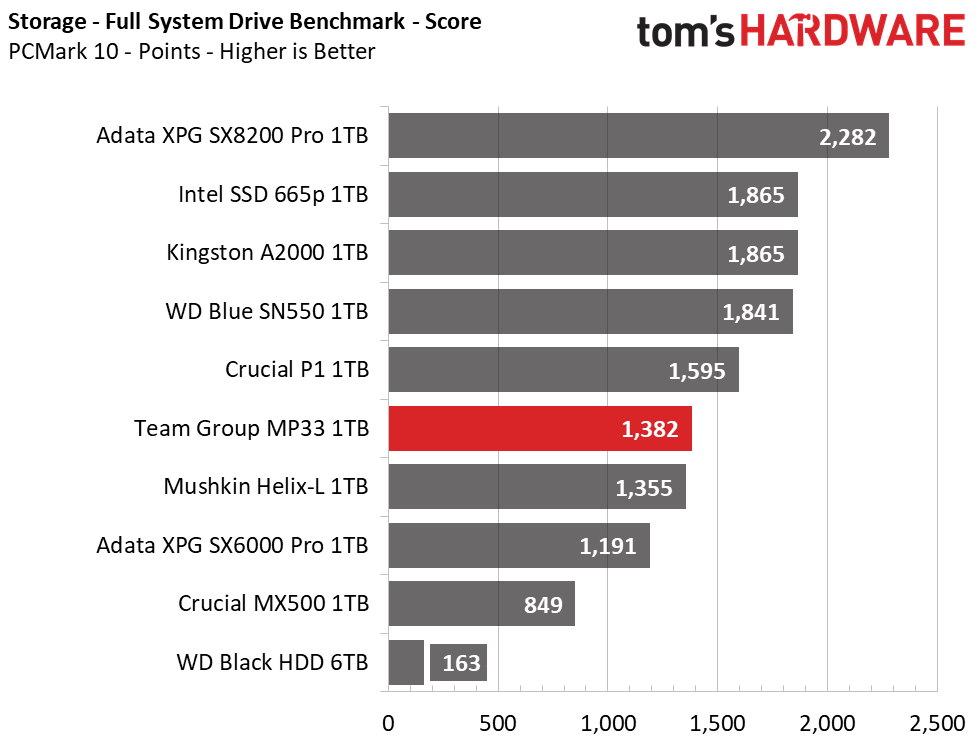
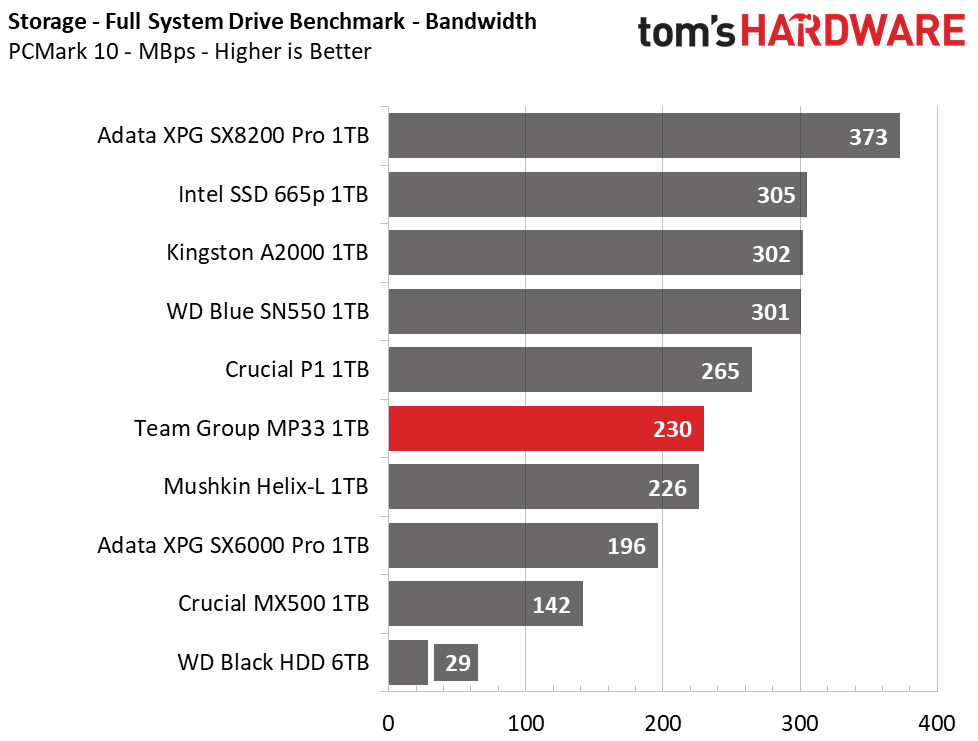

Overall, Team Group’s MP33 will provide you with a snappy user experience during typical desktop PC use. It ranks well in PCMark 10’s storage tests and scores fifth place in the data test, even outranking the Kingston A2000 which has a DRAM-based architecture. Once it hits the quick and full tests, however, the MP33 falls into sixth place. However, it still outperforms the SX6000 Pro and Crucial MX500.
Trace Testing – SPECworkstation 3
Like PCMark 8, SPECworkstation 3 is a trace-based benchmark, but it is designed to push the system harder by measuring workstation performance in professional applications.

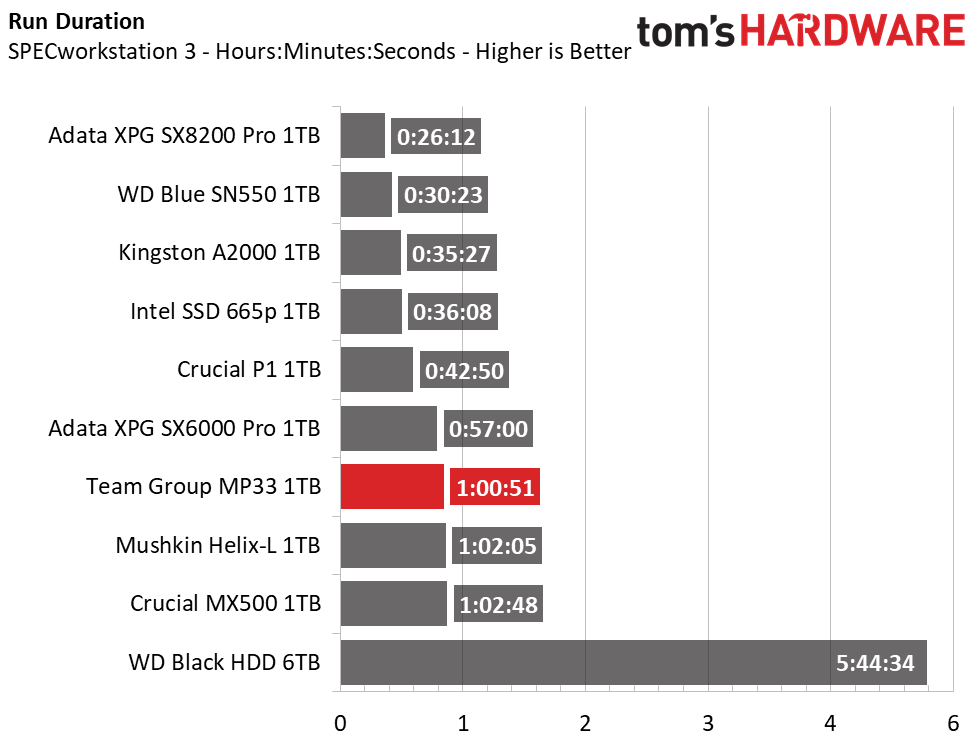
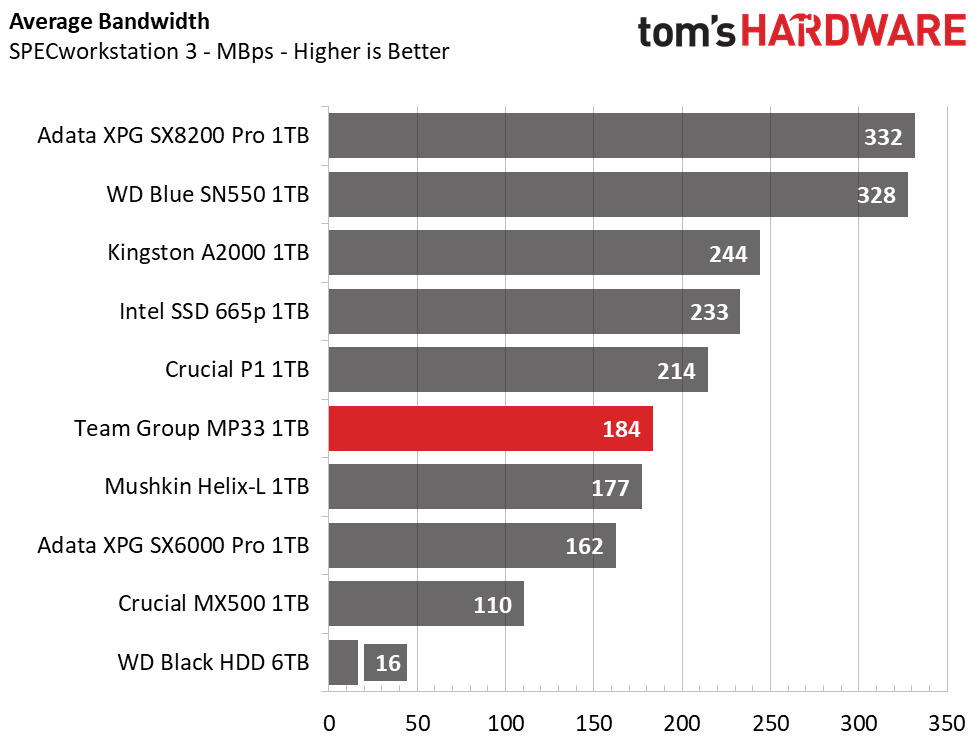


As we saw in PCMark 10, Team Group’s MP33 lags during heavier workloads like most of the other DRAMless SSDs, save for the WD Blue SN550. After bombarding the drive with this much heavier workload than what PCMark 10 hit it with, we see this trend continue.
Thanks to their DRAM-based architectures, the Kingston A2000, Intel SSD 665p, and Crucial P1 offer a better quality of service than the DRAMless alternatives.
Synthetics - ATTO
ATTO is a simple and free application that SSD vendors commonly use to assign sequential performance specifications to their products. It also gives us insight into how the device handles different file sizes.

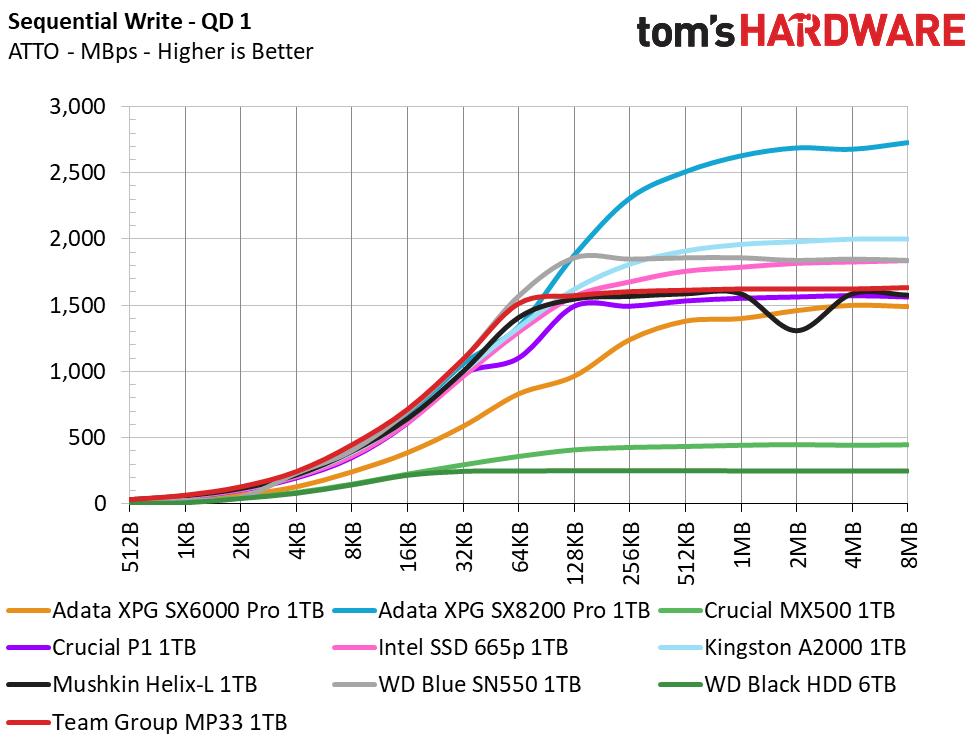
We tested Team Group’s MP33 at a QD (queue depth) of 1, representing most day to day file access at various block sizes. It delivers slightly faster small file size performance at 8KB and 16KB file sizes than the Helix-L. The Kingston A2000 and WD Blue SN550 both show better performance overall, though.
Synthetic Testing - iometer
iometer is an advanced and highly configurable storage benchmarking tool that vendors often use to measure the performance of their devices.
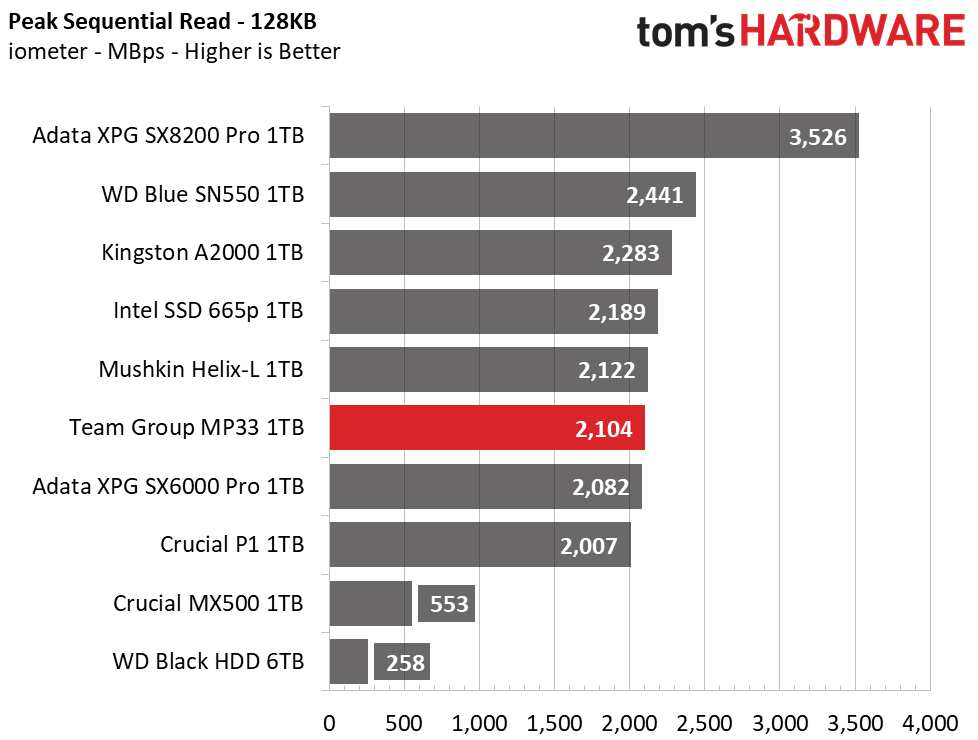
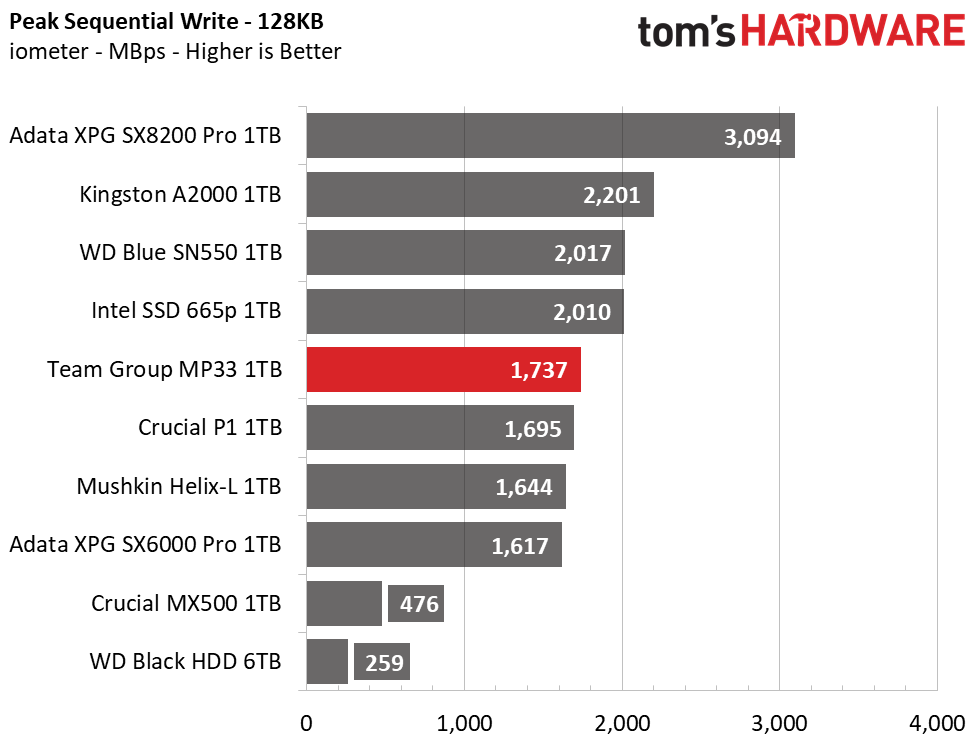


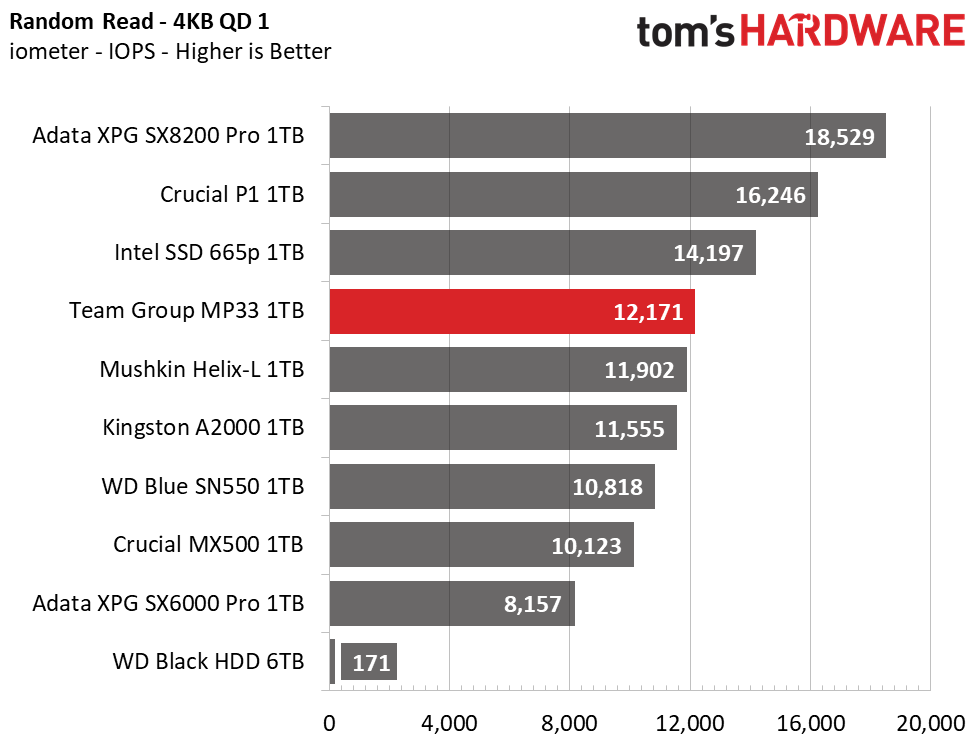
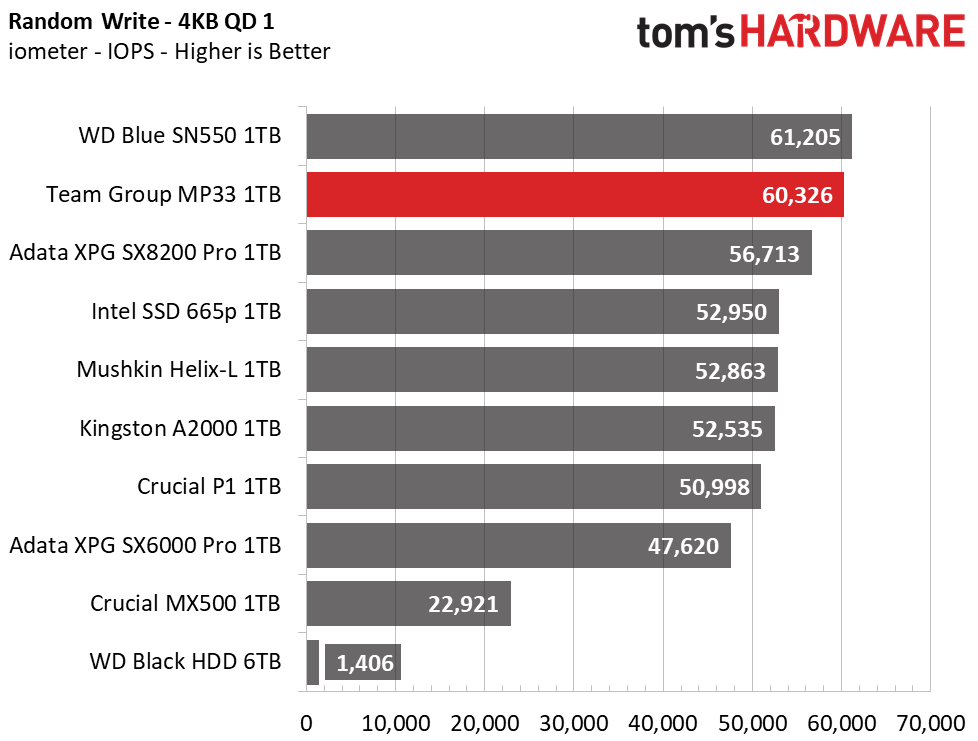
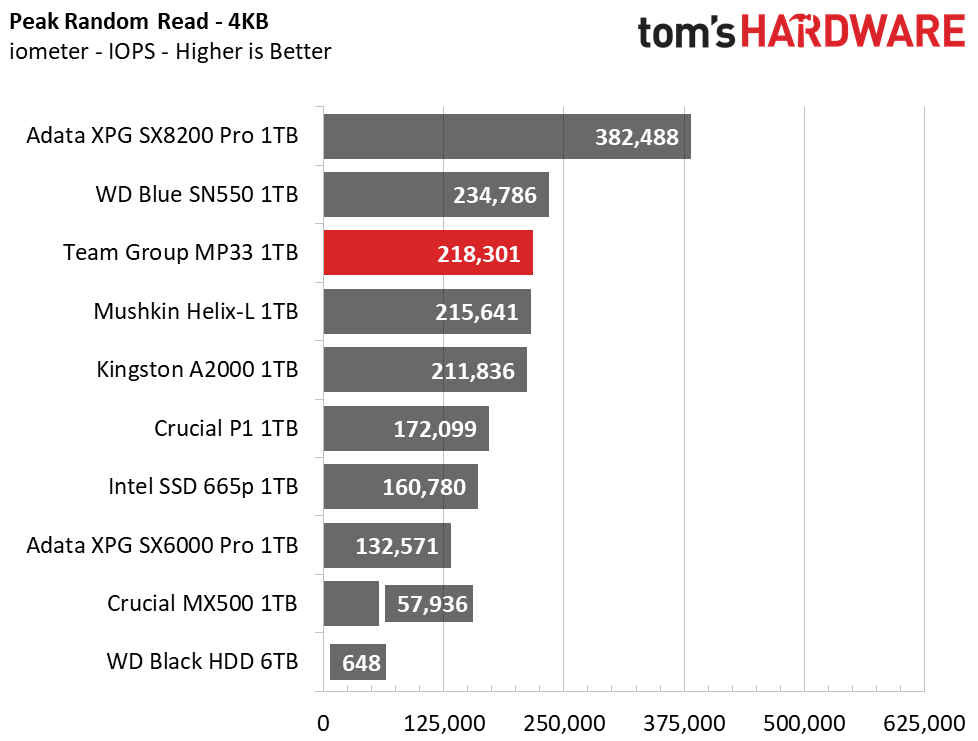
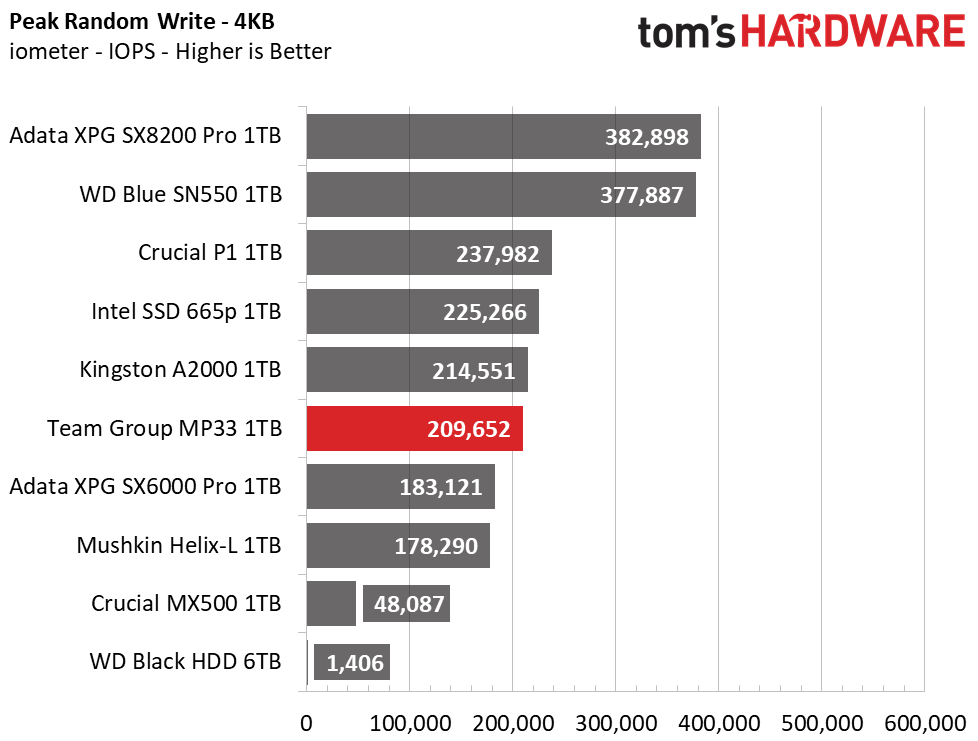
Peak read performance measured in at 2.1 GBps of throughput, and write performance hit 1.7 GBps, both exceeding the slower, but official, 1.8/1.5 GBps specification. Random performance is very responsive thanks to the SMI controller and Micron NAND being tuned so well together.
Sustained Write Performance, Cache Recovery, and Temperature
Official write specifications are only part of the performance picture. Most SSD makers implement a write cache, which is a fast area of (usually) pseudo-SLC programmed flash that absorbs incoming data. Sustained write speeds can suffer tremendously once the workload spills outside of the cache and into the "native" TLC or QLC flash. We use iometer to hammer the SSD with sequential writes for 15 minutes to measure both the size of the write cache and performance after the cache is saturated. We also monitor cache recovery via multiple idle rounds.
When possible, we also log the temperature of the drive via the S.M.A.R.T. data to see when (or if) thermal throttling kicks in and how it impacts performance. Bear in mind that results will vary based on the workload and ambient air temperature.
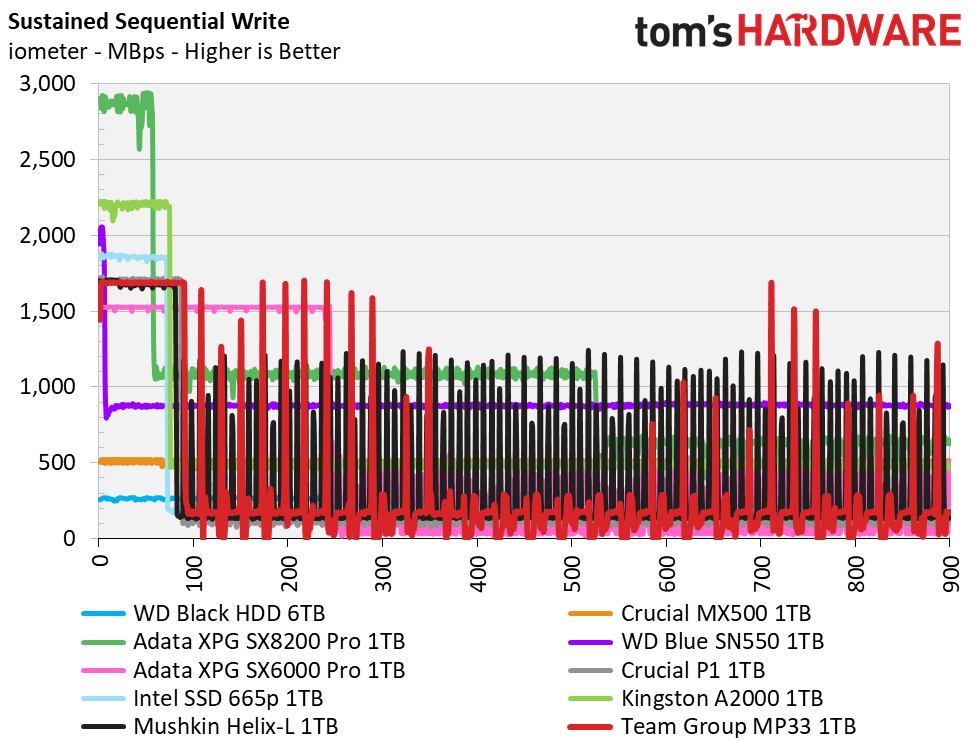
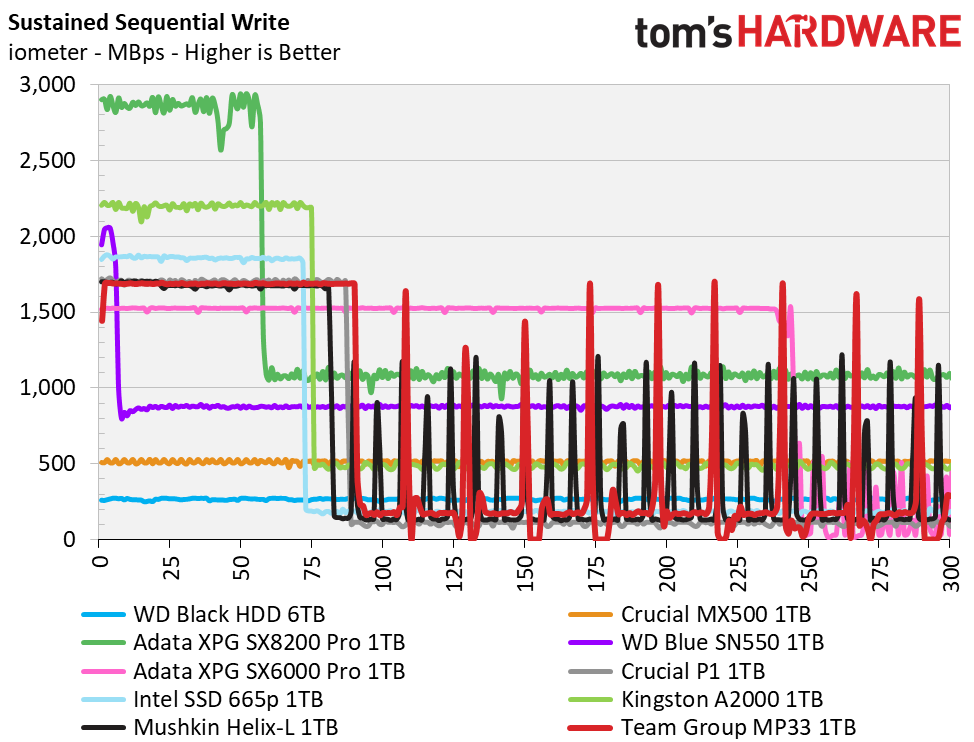

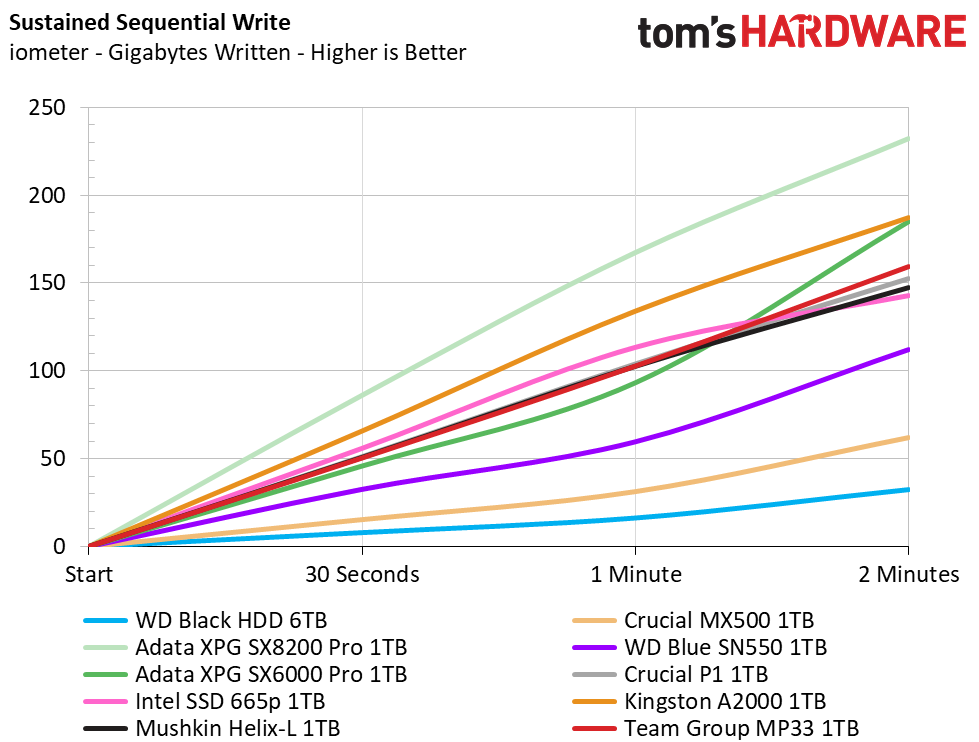
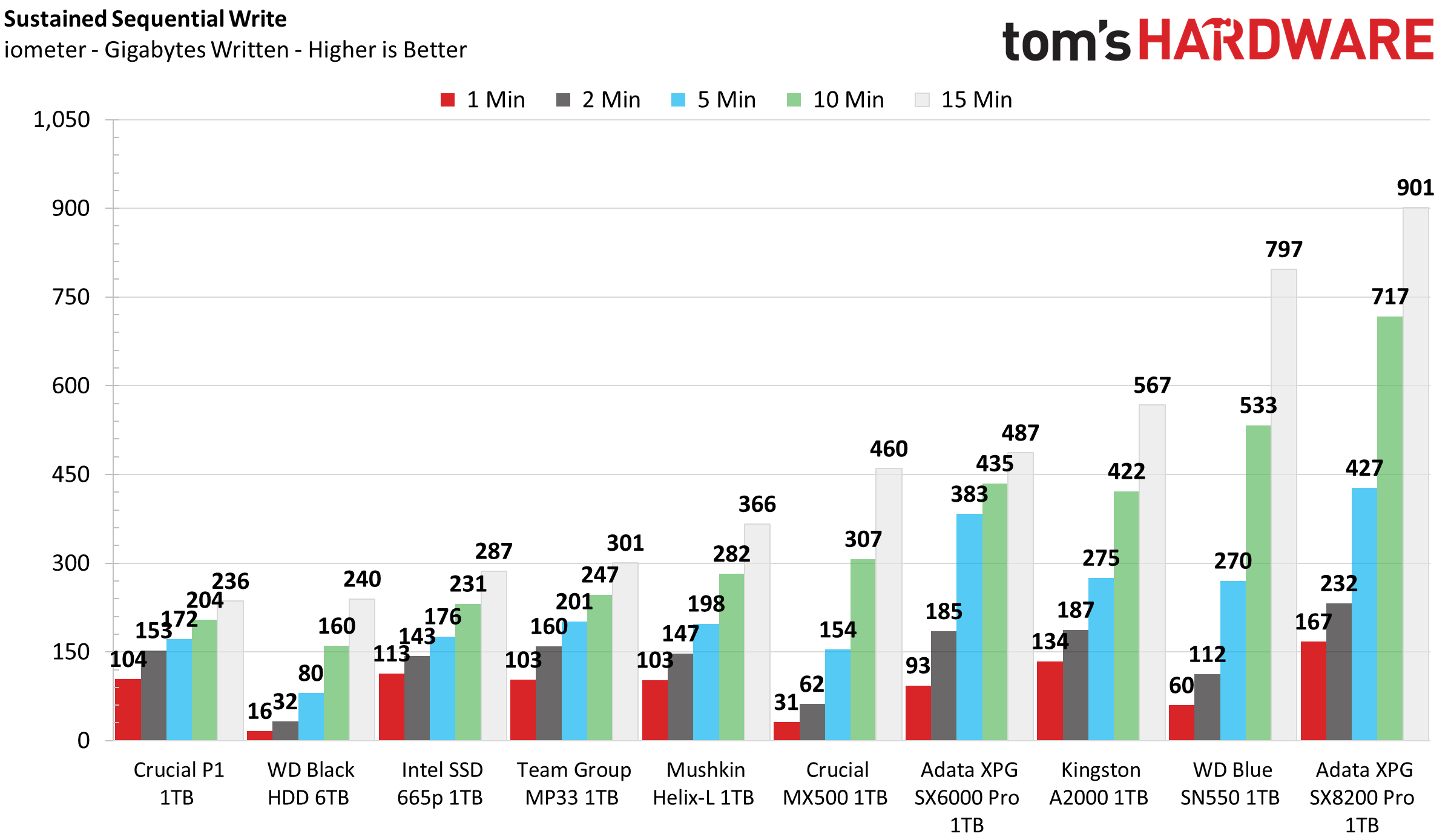
The MP33’s write cache measured in at just over 150GB. The drive wrote to the cache at roughly 1,690 MBps for a minute and a half. Once filled, write performance fell to inconsistently slow speeds that averaged 185MBps. This is about 100MBps slower (on average) than the Mushkin Helix-L’s base write speed with 64L TLC NAND flash. There were even moments when writes had to wait and no data was written for 1-4 seconds, similar to how the DRAMless Adata SX6000 Pro performs when its cache runs out. After finishing writing to the cache, the MP33 recovers fairly quickly: It freed up about 65GB of cache for more incoming writes after a minute of idle.
Temperatures were well within the normal operating range during the file transfers. The drive didn't overheat even when we transferred over 200GB of data to and from the SSD at full speed in a room with static air at 25C.
Power Consumption
We use the Quarch HD Programmable Power Module to gain a deeper understanding of power characteristics. Idle power consumption is a very important aspect to consider, especially if you're looking for a new drive for your laptop. Some SSDs can consume watts of power at idle while better-suited ones sip just milliwatts. Average workload power consumption and max consumption are two other aspects of power consumption, but performance-per-watt is more important. A drive might consume more power during any given workload, but accomplishing a task faster allows the drive to drop into an idle state faster, which ultimately saves power.


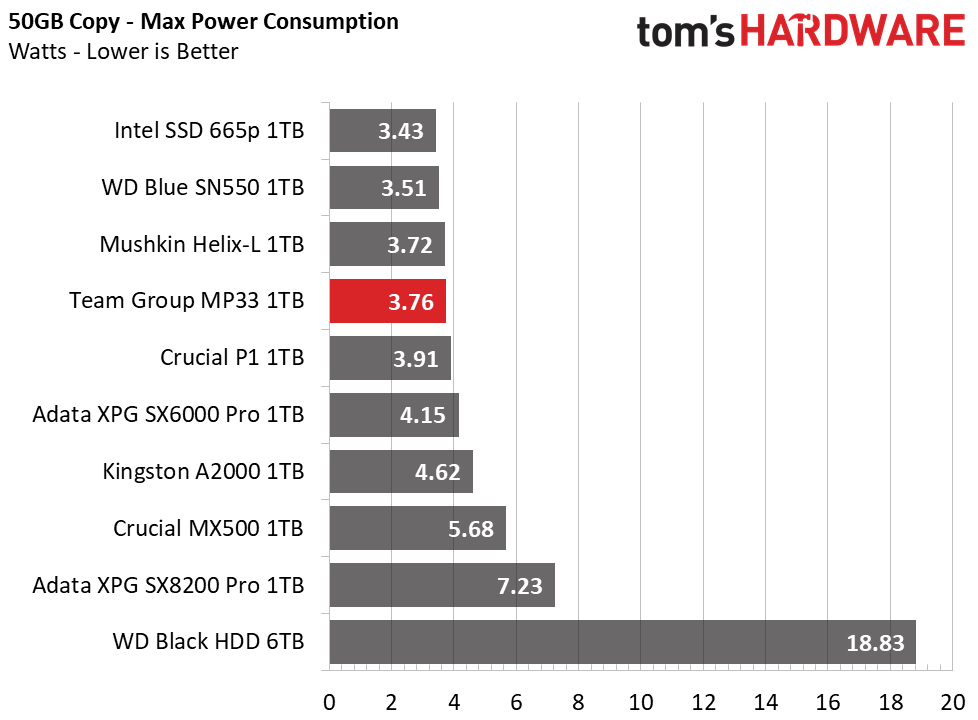


We use the Quarch HD Programmable Power Module to gain a deeper understanding of power characteristics. Idle power consumption is a very important aspect to consider, especially if you're looking for a new drive for your laptop. Some SSDs can consume watts of power at idle while better-suited ones sip just milliwatts. Average workload power consumption and max consumption are two other aspects of power consumption, but performance-per-watt is more important. A drive might consume more power during any given workload, but accomplishing a task faster allows the drive to drop into an idle state faster, which ultimately saves power.
MORE: Best SSDs
MORE: How We Test HDDs And SSDs
MORE: All SSD Content

Sean is a Contributing Editor at Tom’s Hardware US, covering storage hardware.
-
dvslawrence I purchased this drive on sale given the SM controller and related benchmarks from the article - When it came in it had a Realtek controllerReply
RTS5763DL
Just FYI for anyone else.
